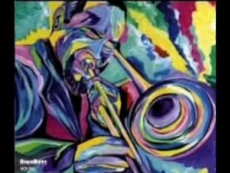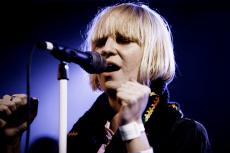
Acid Jazz is a fusion genre, synonymously known as Club Jazz, and derives from a mixture of Disco, Jazz, Funk and Soul music. The genre came to life in London with the club scene, and achieved popularity in the 1980’s. Later, it also reached a level of mainstream success in countries such as Brazil and the US.
Generally, it is accepted that there are two different types of Acid Jazz, and therefore, two different ways of creating the music. One approach to composition was ‘groove-based.’ Thus, the rhythm of the song was the most important aspect. The rhythm would typically be a repeating pattern that would be played by bass guitars and electric guitars and sometimes keyboards. The alternate method was more focused on percussion; beats created electronically and pre-made percussive tracks with drum machines.
Instruments included vocals, keys (often keyboards for an electronic sound with more groove), drums, usually more than just a standard kit for a wider range of percussive sounds, electric guitars, bass guitars and also a horn section with trumpets and saxophones for example, which strongly shows the Jazz roots. Vocals varied immensely, and could be more of a soul/funk style with powerful vocal lines, or sometimes even Rap would be incorporated. This links the genre with Hip-hop, and makes it stand-out from typical Jazz. Some bands would even use DJ’s, especially in live sets, to mix music samples and play electronic samples too; this is what helped to make the genre so popular within the club scene.

Horns would play backing riffs, repeated at key parts of the song, meaning that despite the relatively avant-garde nature of the music, it was still catchy and easy to dance to. Partially due to the instrumentation, swing rhythms were frequently found in Acid Jazz, which made the genre very different to other music played in clubs, especially down to its focus on rhythms rather than just heavy percussion, despite being percussively influenced itself.
Since the 1990’s, Acid Jazz has somewhat disappeared from the music scene. In part, this is due to the current preference for music to essentially just be beat-based for dancing in clubs. Arguably, the genre hasn’t completely died out, what with many songs now featuring memorable horn sections regardless of genre, and DJ’s and drum machines being more popular than ever. Jamiroquai are perhaps the most notable band that thrust Acid Jazz into the mainstream music scene, with their soulful vocals and strong grooves dominating the 1990’s and early 2000’s. Today, the most popular artist classified within the genre is probably Sia. Although taking a subtler approach to the style with flowing horn lines and cascading jazz chordal sequences, coupled with powerful, soulful vocals, Sia’s music nonetheless continues to popularize the intriguing genre that is Acid Jazz.
Image1: https://www.youtube.com/watch?v=0odQiWobtWM
Image2: https://en.wikipedia.org/wiki/Sia_Furler

0 Comment:
Be the first one to comment on this article.